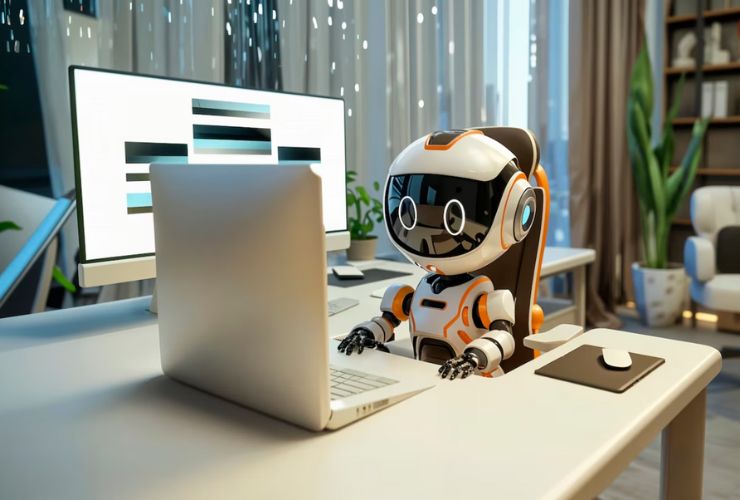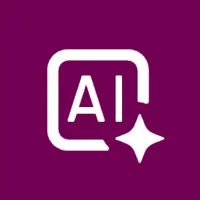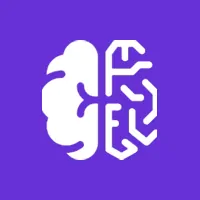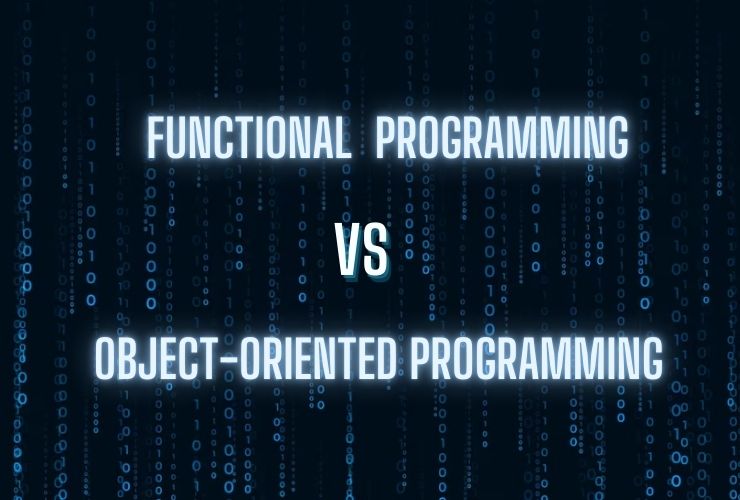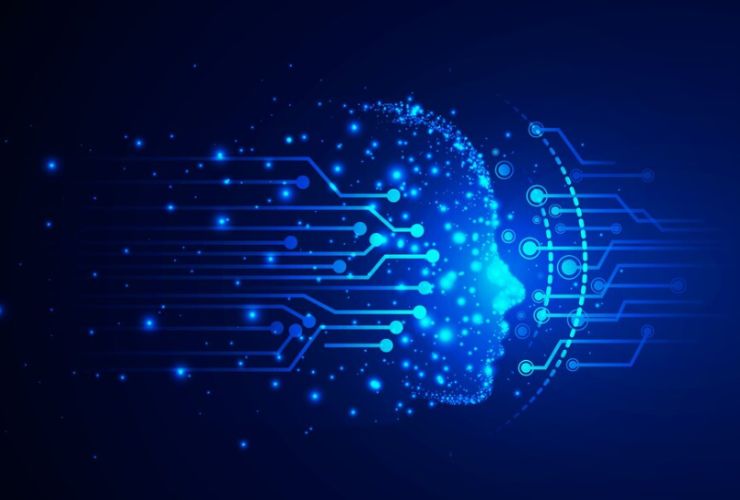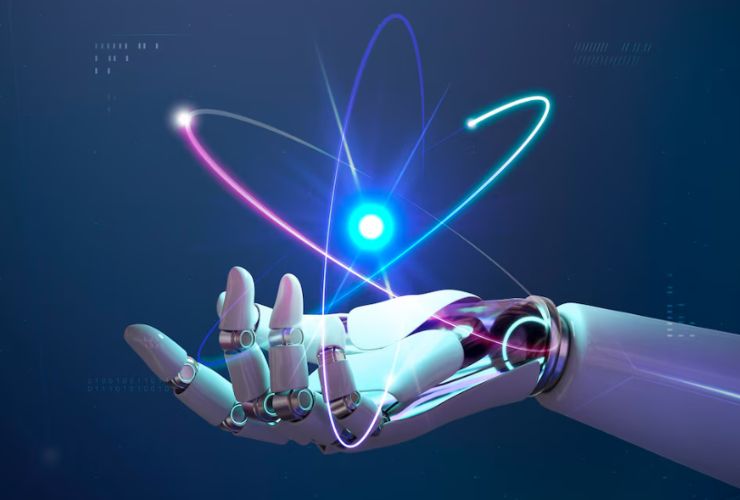Artificial Intelligence (AI) is no longer a concept that is referred to as “the future.” AI is here, offering the world and major industries to reshape work, business and other activities. AI provides automation, advanced data analysis and other work enabled ways of working more efficiently; allowing for new growth and innovation today. So what does this mean for the work force of the future?
AI is not simply going to change what we do. AI’s puzzle pieces change the way we think (and respond to stimuli), collaborate, and create value in the workplace– and suggestions already demonstrate AI can transform employee and customer experiences level of personalization. Organizations who make sense of and apply AI strategically will have a competitive advantage as the global economy changes and adapts more rapidly than ever.
1. Automation of Repeat Tasks
One of the most immediate, as well as visible, effects of AI is automating repeat and heavy time processes. Activities like data entry, invoicing, report generation, and customer service inquiries can be done–effectively–with AI bots powered by systems of AI.
Example: AI chatbots can respond to thousands of customer queries simultaneously, freeing up human agents to handle complex or sensitive cases.
Benefit: Make employees available for higher value work (strategy, connecting the dots, innovating and creative thinking) improving productivity and employee satisfaction.
2. AI as a Partner in Productivity
AI is increasingly functioning as a collaborative partner rather than replacing employees. AI-enabled technologies are assisting individuals across companies in making decisions, managing projects, and optimizing the routine workflow.
- Smart Assistants: Virtual assistants or AI-driven email management systems are examples of smart assistants that can effectively schedule meetings, prioritize tasks, and provide reminders.
- Project Management: AI-enabled platforms can pinpoint bottlenecks, resource allocation, and adjust deadlines as necessary.
- Data Insights: For employees, AI analytics tools analyze complicated datasets quickly, supporting decision-making faster and more clearly.
This partnership between AI and employees creates a more efficient, informed, and innovative workforce.
3. Individualized Learning and Upskilling
AI’s ascendance has made continuous learning necessary. AI-enabled learning systems will review employee performance data, find skill gaps, and deliver uniquely personalized learning programs.
- Adaptive Learning: Courses will adapt in real-time, responding to a learners pace or understanding of material.
- Predictive Career Pathing: AI-enabled tools will deliver individualized recommendations for next career steps or certifications based on evolving industry demands.
- Upskilling for the Future: Employees will have the opportunity to upskill and prepare for future roles in AI, data analysis, cybersecurity and other areas that emphasize technology.
All this will help ensure companies maintain a workforce who is agile, purposeful and ready for new work responsibilities.
4. Emerging Job Roles and Opportunities
Even though AI automates a variety of jobs, it also creates brand new job categories:
- AI and Machine Learning Engineers: They design and train AI models for industry applications.
- Data Scientists and Analysts: They help convert unstructured data into meaningful information.
- AI Ethics and Compliance Experts: They ensure AI systems are fair, transparent, and ethical.
- Human-AI Collaboration Managers: They oversee the collaboration between teams and AI tools, to maximize productivity.
The need has never been greater for trained workers who understand AI, and it emphasizes the necessity for companies and educational institutions to develop training programs to address the AI skills gap.
5. Remote Work and AI Collaboration
While the COVID-19 pandemic fast-tracked remote work, AI is enabling remote collaboration more efficiently now:
- Automated Scheduling: With AI tools, they can now coordinate work across time zones, calendars, and team locations, and limit scheduling conflicts across meetings and time zones.
- Language Translation in Real-time: AI powered language translation tools allow global teams to collaborate seamlessly, without language issues, and with more comfort.
- Virtual Collaboration: AI-enabled video conferencing tools can automatically summarize meetings, track action items from calls, and even suggest next steps or sentiment analysis among the attendees.
By designing communication around workflow, AI gives companies access to the talent pool of professionals across the globe.
6. Ethical and Workforce Considerations
While there are benefits to the use of AI, it presents ethical and workforce issues organizations need to consider:
- Job Displacement: Some routine jobs may be reduced, leading to a need for retraining and upskilling programs.
- Bias in AI Systems: AI may perpetuate the bias that may be inherent in the data it was trained on, thereby impacting hiring, promotions, or customer interactions.
- Privacy: Many uses for AI systems may require large datasets, which can lead to potential problems of privacy and security.
- Employee Adaptation: AI will require employees to adapt and may need guidance and training to be most effective in the workplace.
Ethical adoption of AI tools promotes working together with AI technology, transparency of AI applications, and ongoing monitoring of the potential risks while maximizing the potential benefits.
7. Preparing for the AI-Enhanced Workplace
Successful organizations in a world enabled by AI will:
- Invest in Upskilling: Provide ongoing training to employees is a critical advantage for an organization if they expect to have a workforce that can adapt to AI.
- Use Human-Centric AI: AI tools should be developed to heighten human ability rather than replace it.
- Ethics and Transparency First: Create policies that govern the use of AI fairly and responsibly.
- Promote Innovation: Allow employees to try and leverage AI technology to develop models to address business-related problems.
Conclusion
AI is not just changing the future of work—it is defining it. From automating routine tasks to creating new career opportunities, AI is transforming how businesses operate and how people contribute. Organizations that embrace AI with a balanced approach—leveraging efficiency while investing in human talent—will thrive in the future workplace.
The key to success lies in preparing the workforce, integrating AI responsibly, and fostering a culture of continuous learning. By doing so, businesses can harness AI’s full potential while ensuring employees remain engaged, skilled, and empowered in the AI-driven world.

